Too much sitting!
Sitting too long can shorten the hamstring muscles. As the hamstrings attach at the sit bones and insert below the knee, having the knees bent puts the muscle in a shortened position. Sitting can also make the glutes inactive which further perpetuates the problem. Weakness and poor contraction of the glutes can make for over-worked hamstrings. Try to limit sitting durations to less than an hour and simply get up and move! Do a few lunges or squats to wake up the posterior chain of the body.
Your hamstrings are over-stretched!
A postural position often called sway back or anterior tilt can place the hamstrings in a lengthened position creating the illusion of tightness. If you notice yourself in the position of having an excessive arch of the low back while standing, try strengthening the core and learn how to activate your glutes while keeping good postural alignment.
Your joints and tissues are stiff!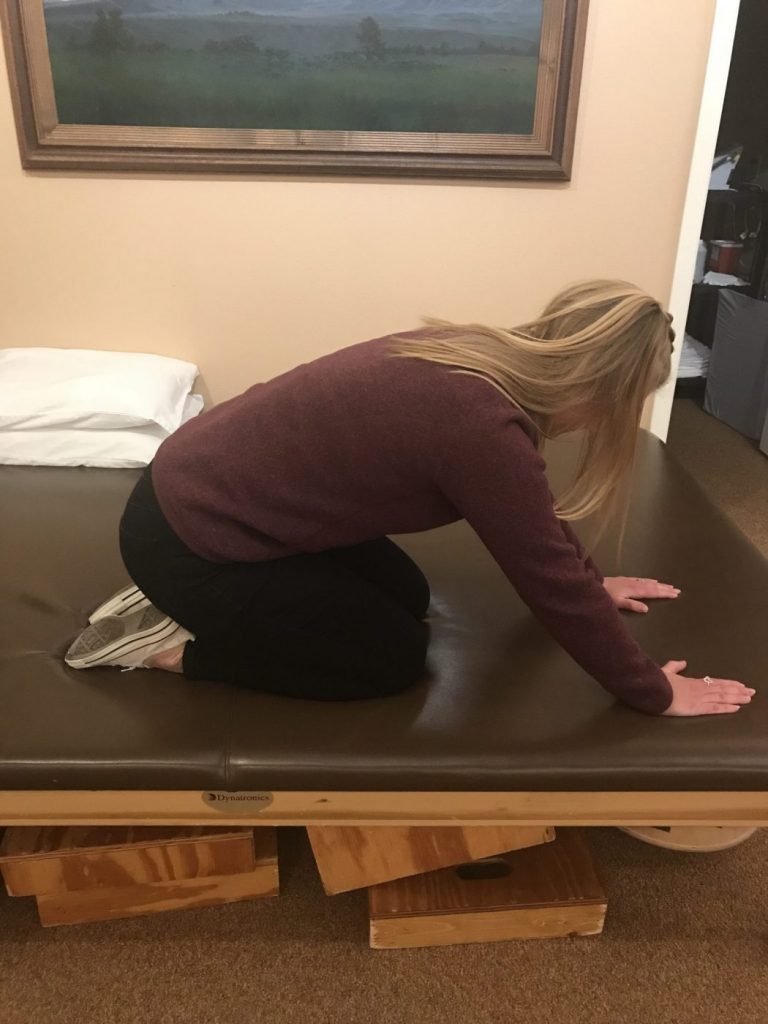
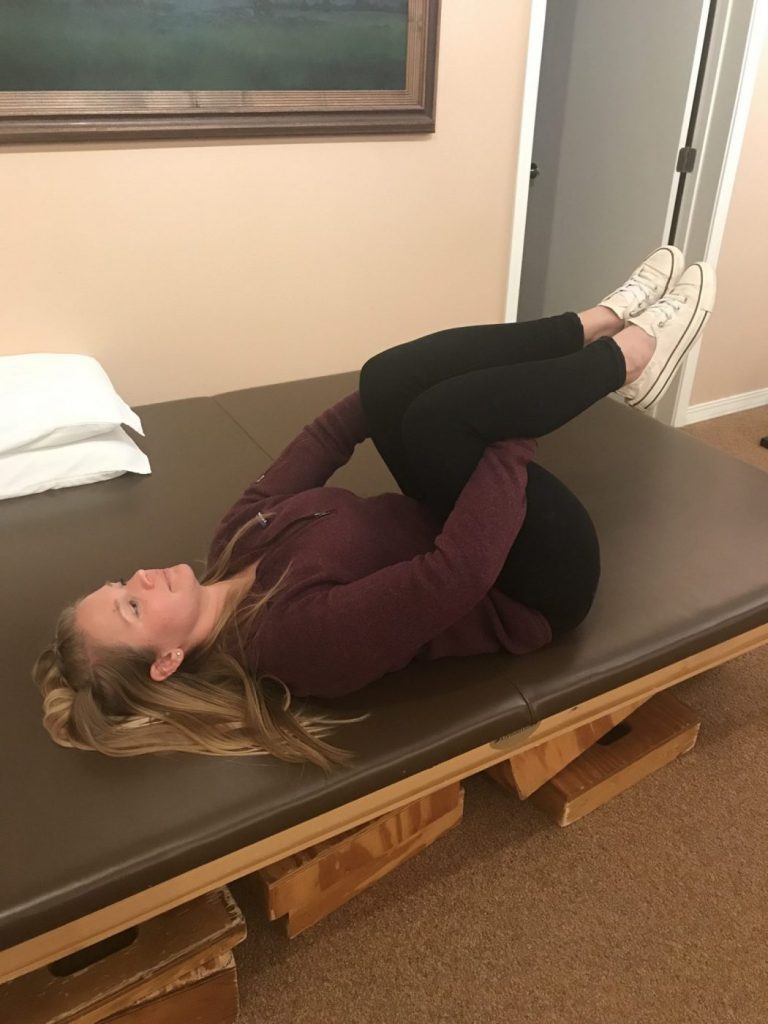
The most common way to test the flexibility of your hamstrings is to do the old toe touch test. This movement is more complex than you may think as it also involves flexion (bending) of the spine and the hip! Think back to the P.E. days with the sit and reach test. Some people can overcome tightness in the hamstring muscles with increased flexibility of the spine and hips. To test the motion of the spine into flexion, simply rock back onto the heels. If you are unable to see a visible rounding of the back or you have pain, it is likely a problem in the spine. The next test is to lie on your back and try to bring the knees to flush against the rib cage. If you can’t this may indicate hip joint stiffness or tight glutes.
Trauma!
Hamstring strains and tears most commonly occur in positions of flexing of the hip with the knee straight including dancing, kicking, or running. It’s often accompanied by an audible pop and pain with activity and/ or with sitting and usually bruising is present. Hamstring trauma needs to be treated with the aid of a physical therapist. If treated improperly, over 1/3 of athletes experience re injury after initial return to sport.
Your hips and core are asleep!
So technically your muscles can’t sleep, but they can forget how to activate at the right times. This is called motor control. To determine if your muscles need to learn how to function, first start with the toe to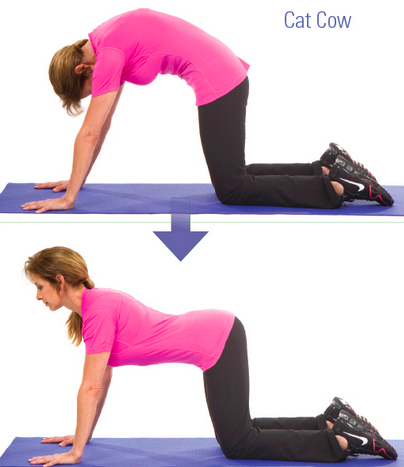 uch test in standing.
uch test in standing.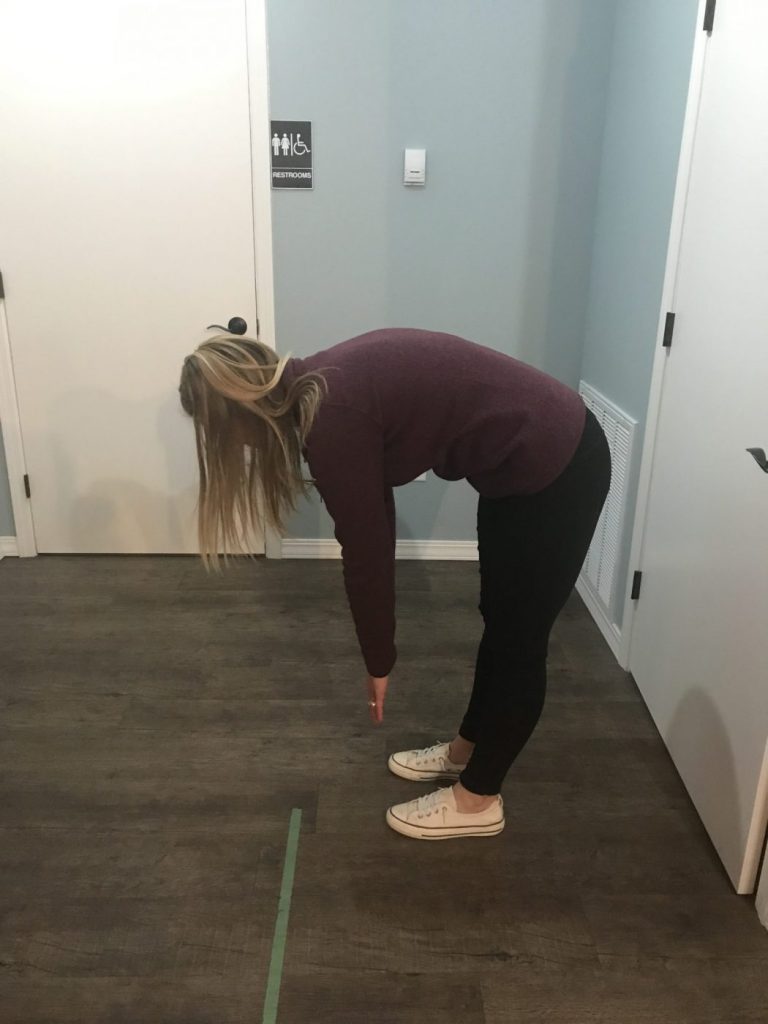 If you are
If you are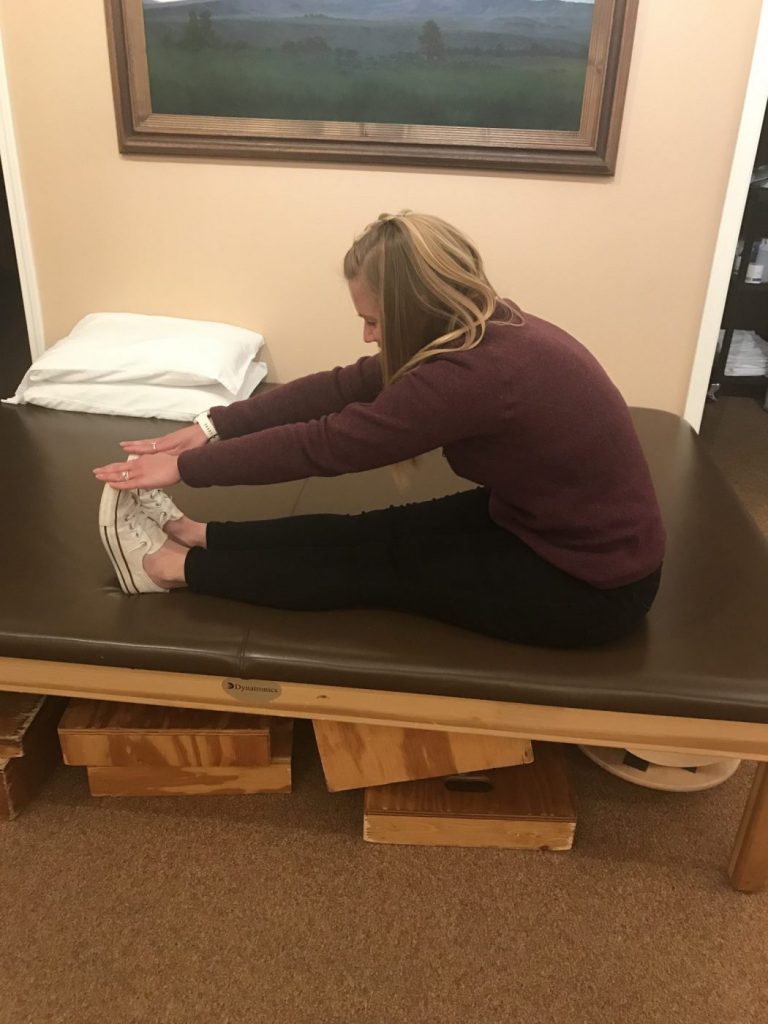 unable to reach the ground, see rounding of the spine, and have your hips drift backward, try touching your toes while sitting. This change in position puts fewer stability requirements on your muscles. If you can touch your toes while sitting; without cheating and bending the knees, then you likely have a motor control issue! Try this exercise and see if it carries over towards the standing toe touch.
unable to reach the ground, see rounding of the spine, and have your hips drift backward, try touching your toes while sitting. This change in position puts fewer stability requirements on your muscles. If you can touch your toes while sitting; without cheating and bending the knees, then you likely have a motor control issue! Try this exercise and see if it carries over towards the standing toe touch.
You are only doing static hamstring stretching!
If you have chronically tight hamstrings stretching may not be helpful. Several studies have shown that stretching in the short term has very short-lived benefits. One study found that after five rounds of stretching gains in flexibility only lasted 6’ and full return to baseline after 32′. Extensive stretching programs only show a 60- 90′ gains in flexibility. What most research studies suggest is a stretching program lasting more long-term (3 -6 weeks) and with longer durations of holds performed more frequently during the day. Another thing to consider is the benefits of a dynamic warm-up to elongate the muscle fibers as its contracting. There are several theories on how muscles respond to stretching including plastic deformation (connective tissue is permanently lengthened) and Viscoelastic deformation (force applied to the muscle makes it relax) and stretching alters the nervous system to increase pain tolerance.